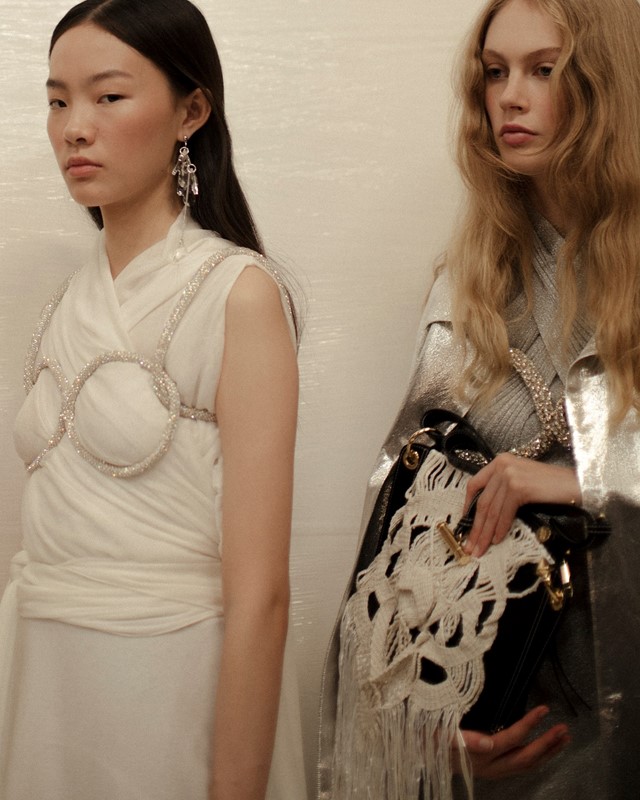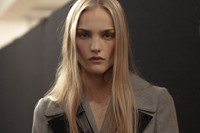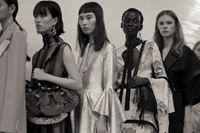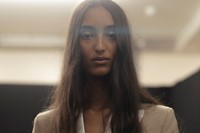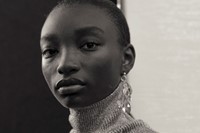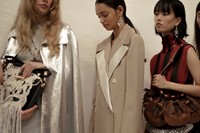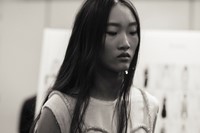For Spring/Summer 2020, Jonathan Anderson made a proposition for easy – but not straightforward – glamour
Backstage at his eponymous label’s most recent show, held at London’s Yeomanry House yesterday, Jonathan Anderson was insistent. “There isn’t an underlying message,” he told the assembled reporters of his Spring/Summer 2020 collection. “It’s just about looking. Maybe we should just enjoy the idea of looking, enjoy the experience.”
It had begun with an act of looking, too: earlier this year, Anderson had encountered the work of Canadian conceptual artist Liz Magor at Blowout, an exhibition held at Harvard University. He was transfixed. Magor’s work – sculpture, which often incorporates found objects – takes the ephemera of daily life and re-presents them in altered contexts. She often describes what she does as trying to recreate the sensation of seeing things in your peripheral vision: one series presents various objects – scraps of plastic, blankets, sweet wrappers, soft toys – in misty perspex boxes. They require you to look closely if you are to see exactly what’s inside. “I liked what she was trying to say about the experience of looking,” Anderson said yesterday. “How we look at things, how we perceive things.”
A number of those perspex boxes – together, the work is titled Pet Co. – were scattered about Anderson’s showspace yesterday, once again quadrangle-shaped with rows of bleacher-style seating rising around the outside edges (last season, he said the shape was inspired by Samuel Beckett’s television play Quad). It was tempting to read them as a metaphor of sorts for Anderson’s own work at both JW Anderson and Loewe – he, after all, is well aware of the peculiar allure of taking the familiar out of context; of re-presenting and altering the way we see the items of clothing we put on each day. Or things we might have considered ‘ugly’ (“I like to be surprised by things that I don’t like,” he told Susannah Frankel in the A/W19 issue of AnOther Magazine). And, like Magor’s boxes, his collections constantly require you to look closer; and look again.
But Magor’s work also prompted Anderson to think down another track – about what we keep, and what we throw away (a prescient issue for the industry at large, too). Dresses were ripped on one side, the hole then trimmed with crystals, as if they were something broken, gussied back to life. Crystals and rhinestones appeared throughout: “I thought about this idea of ‘looking’ at things and how we perceive them, how we look at textures, how we see jewellery and what jewellery really is,” he explained. Jewellery here was pushed to new forms – harness-like crystal bra-tops, layered over dresses, or thick ropes of crystal which sat around the waist, like “armour”, as the designer propositioned.
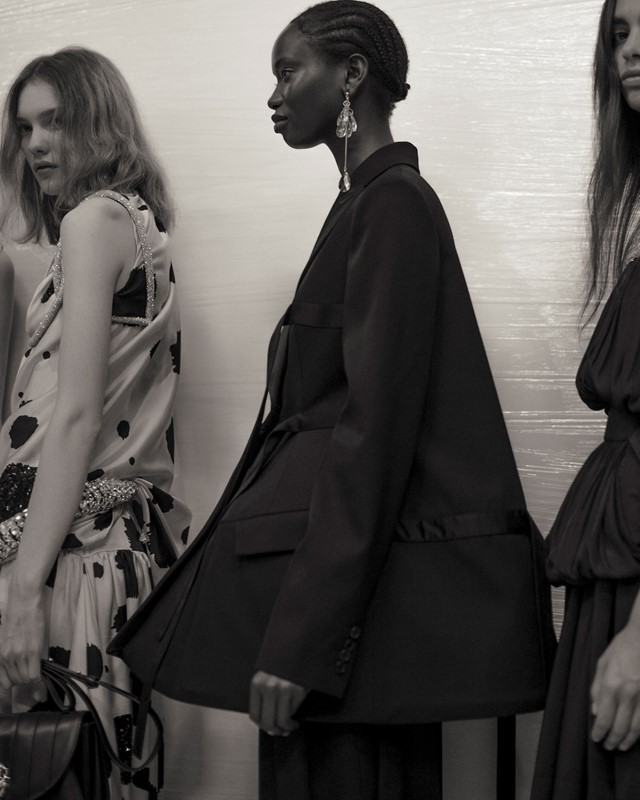
It made for a collection of easy – though not straightforward – glamour. Wrapped gowns draped around the body and shoulders, worn with flat espadrille sandals. Pannier-style pockets, on flared tuxedo tailoring, propositioned a new take on the peplum silhouette. Knitwear disintegrated into long strands of yarn; handbags were decorated with trailing macramé. A cape fluttered by in metallic silver lamé. “I was looking at old magazine covers and the objects were more theatrical in a sense,” he said. If the idea was to conjure that theatre once again, it worked: the audience was rapt.
“Jonathan Anderson is quite possibly the most prolific designer of our proudly prolific times,” wrote Frankel in her recent profile of the designer. It is difficult to disagree. This was a collection which celebrated the sheer joy of beautiful clothes – and the simple pleasure of looking at them.
